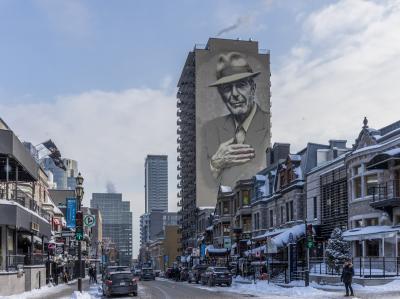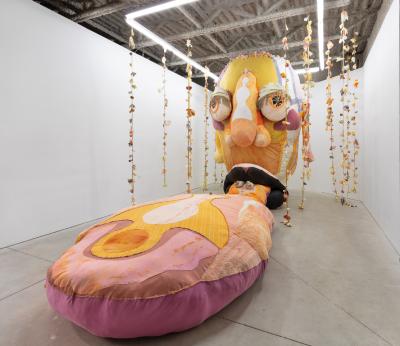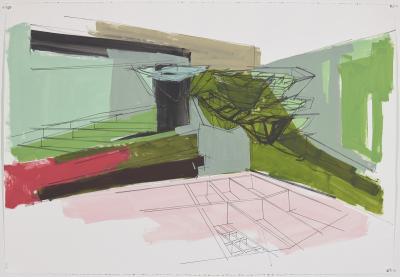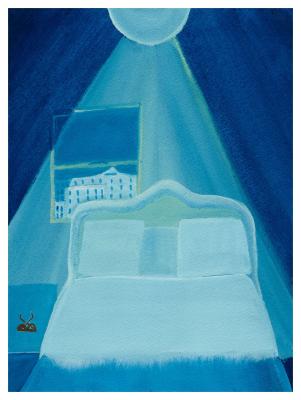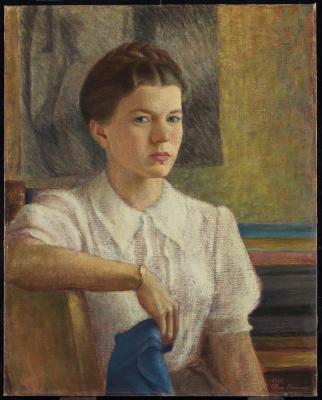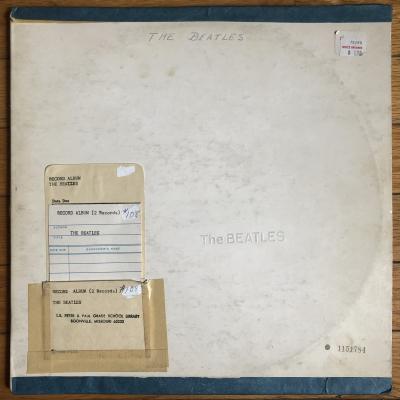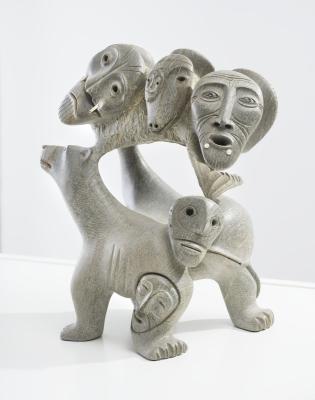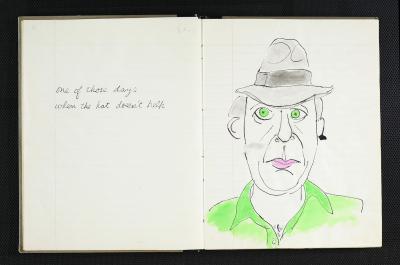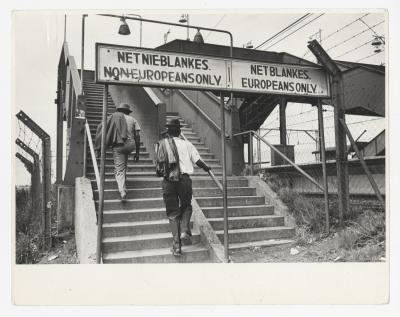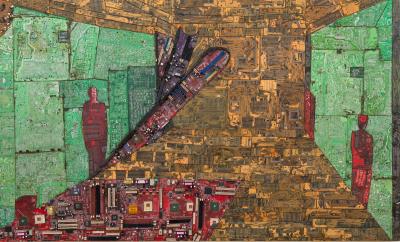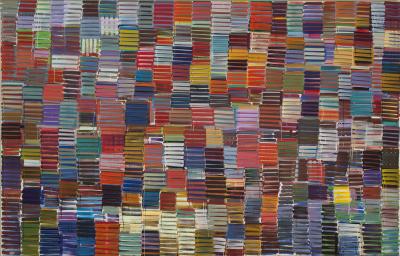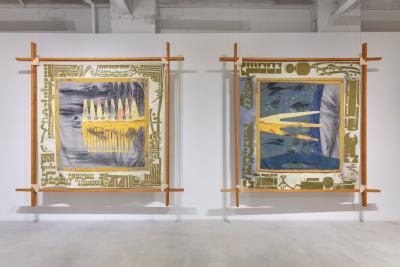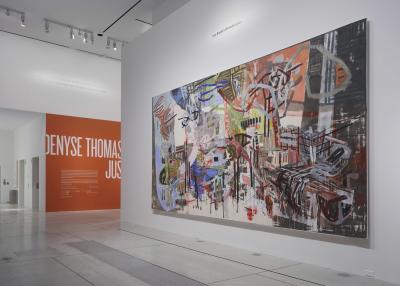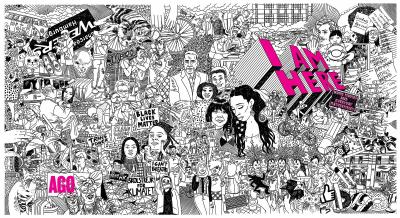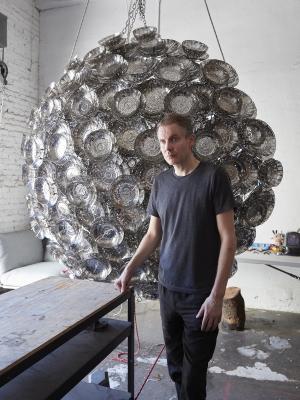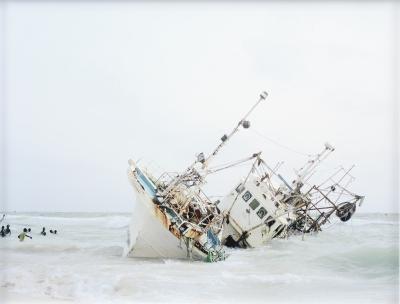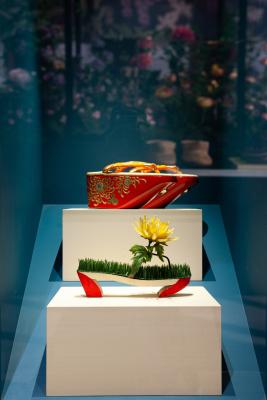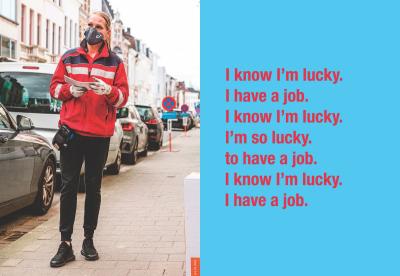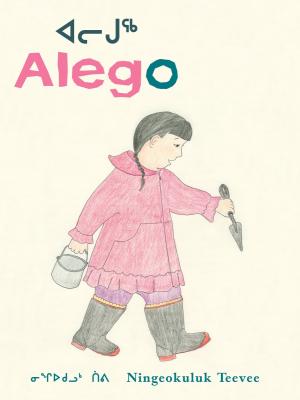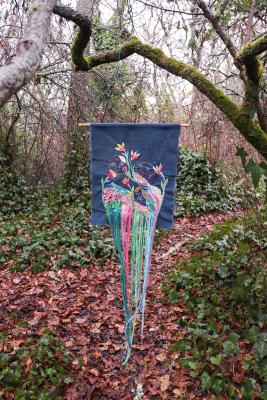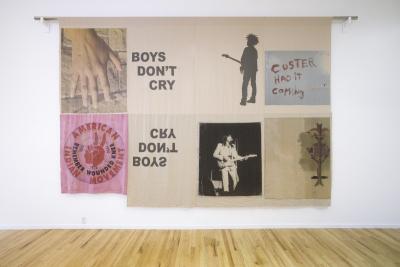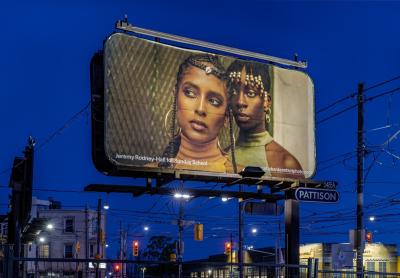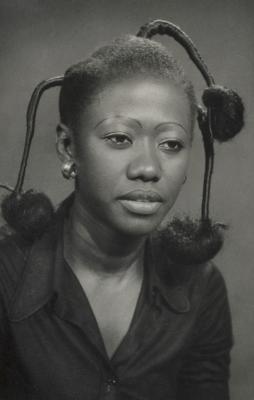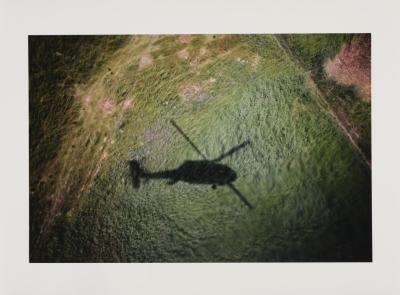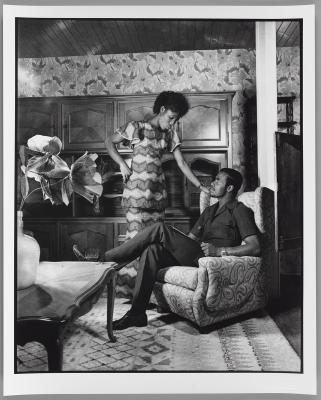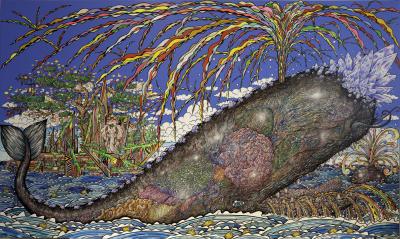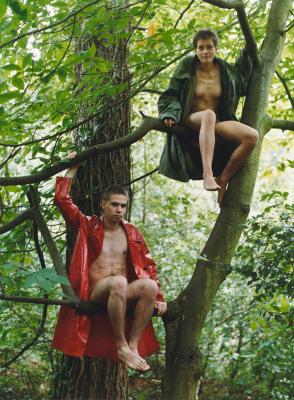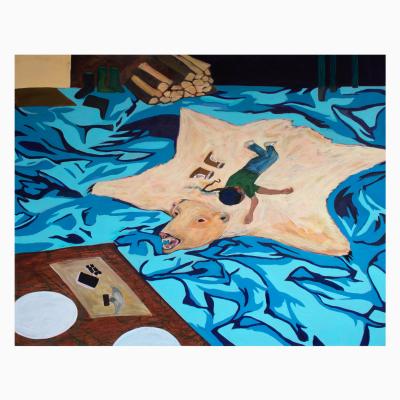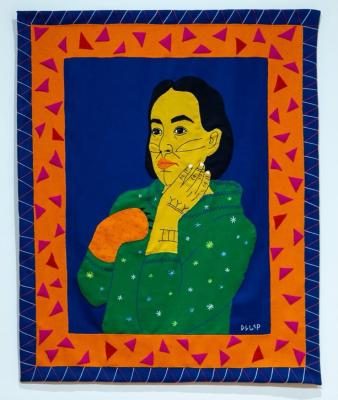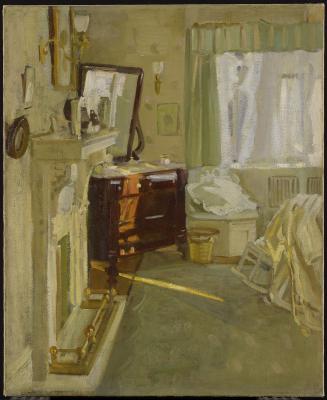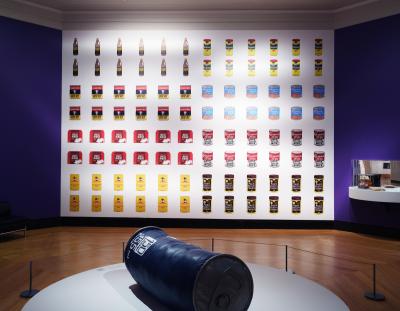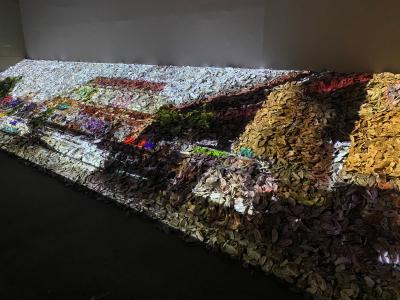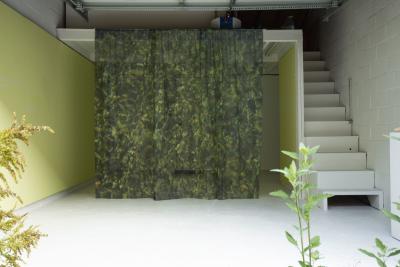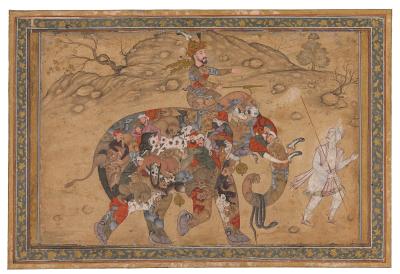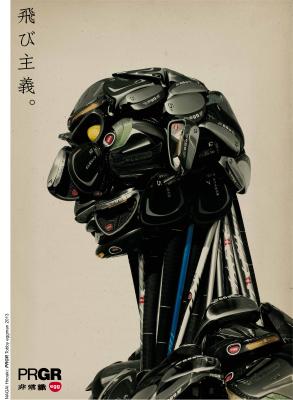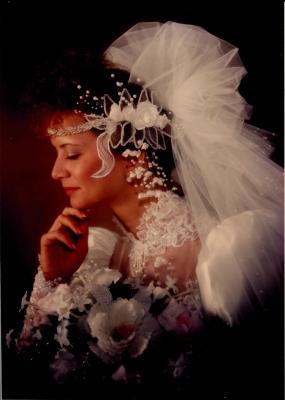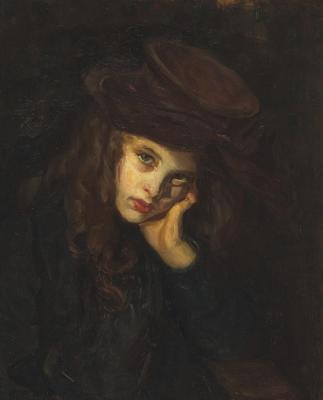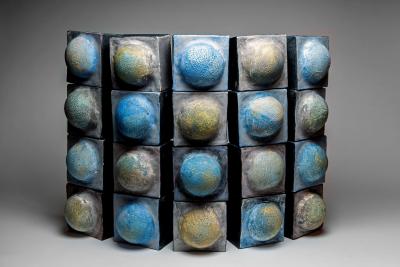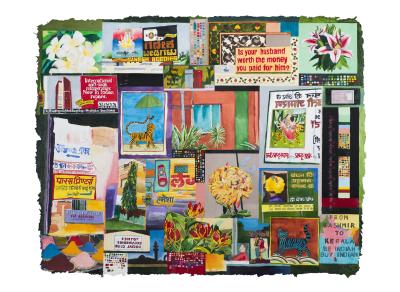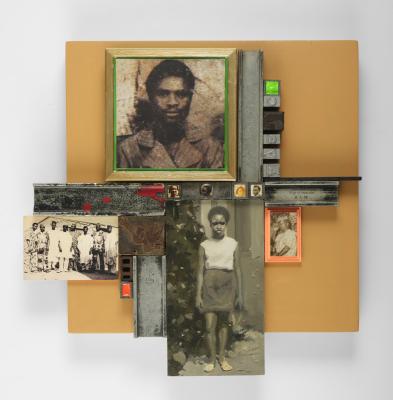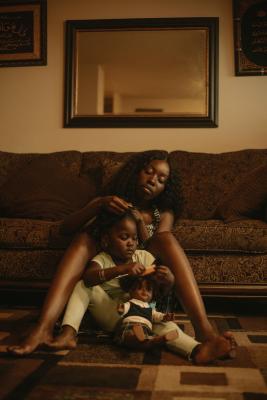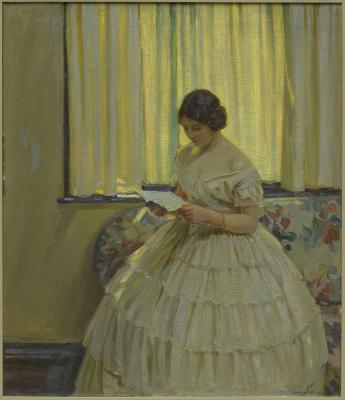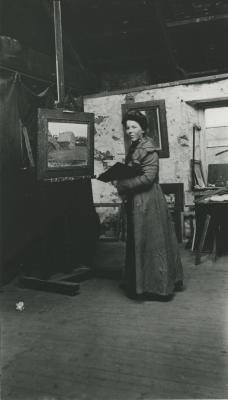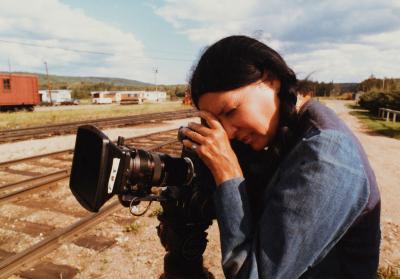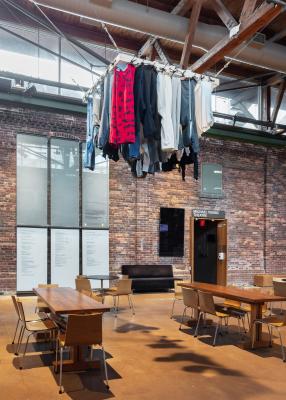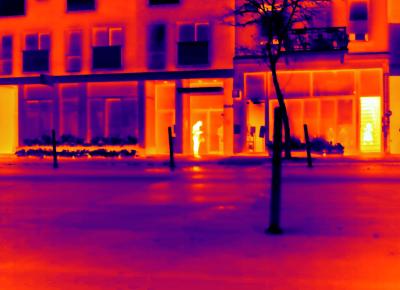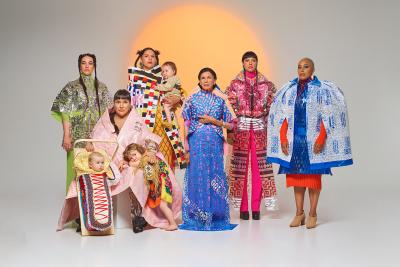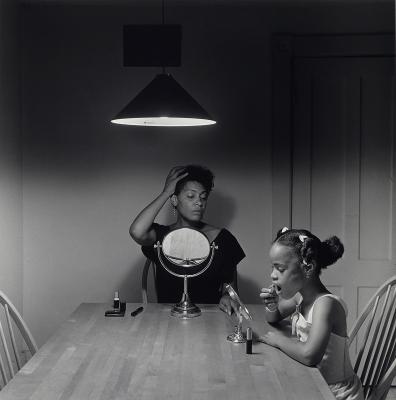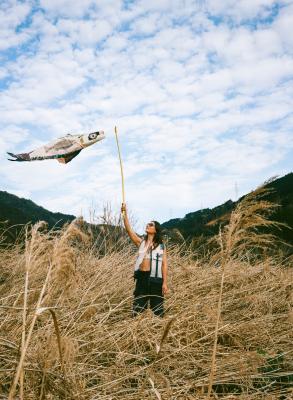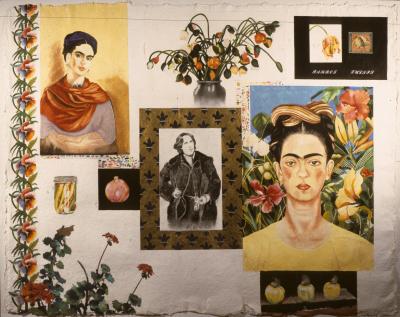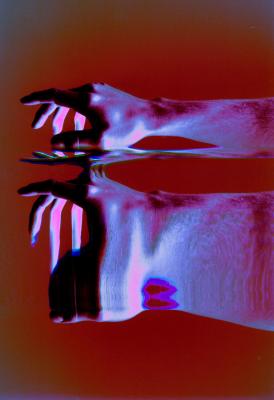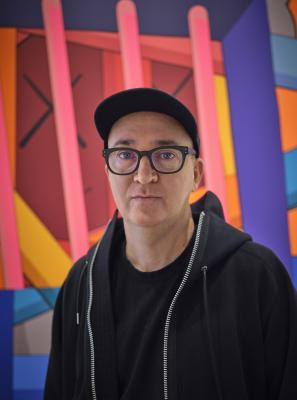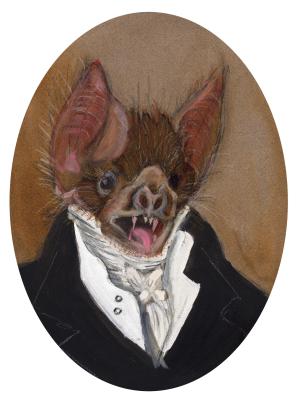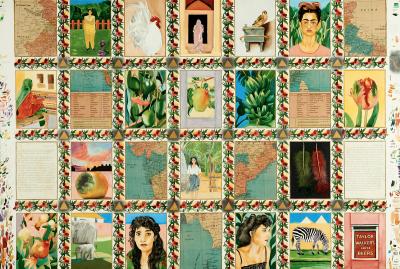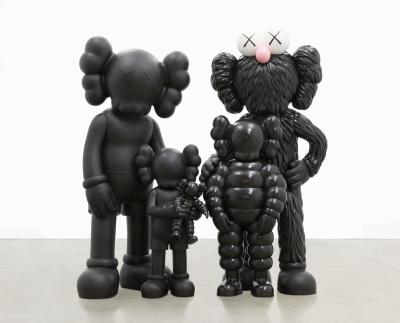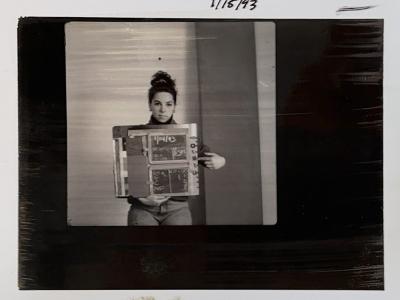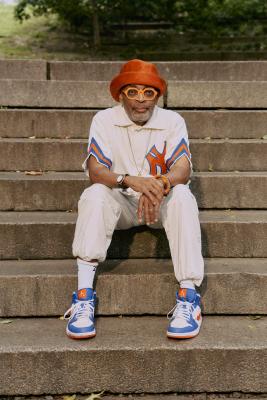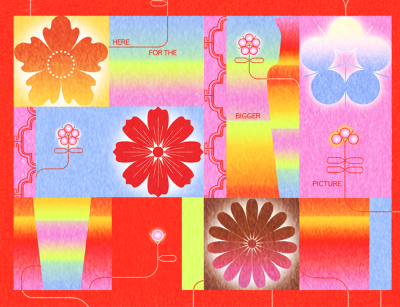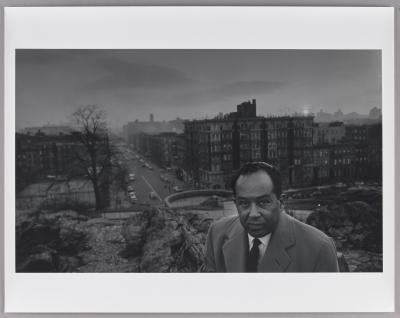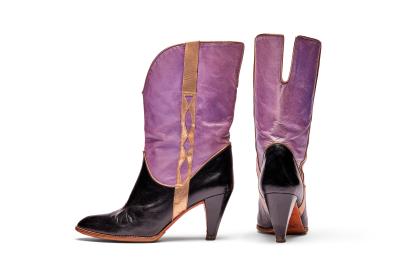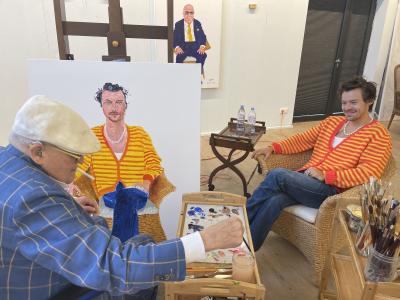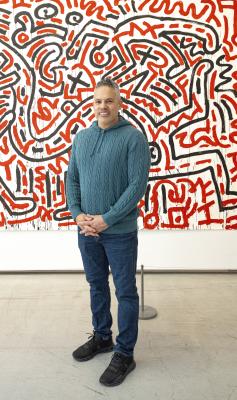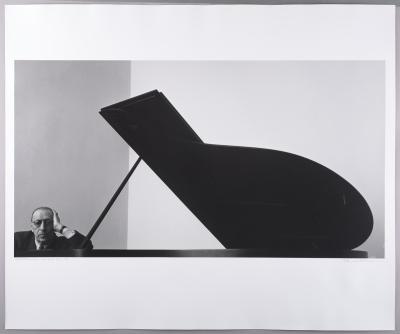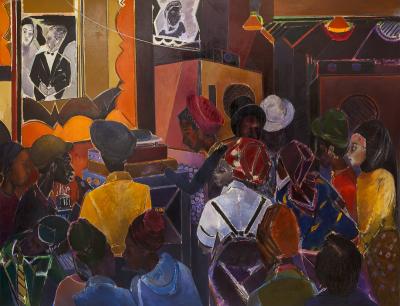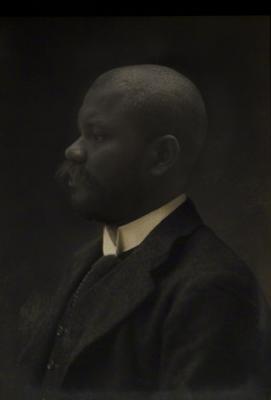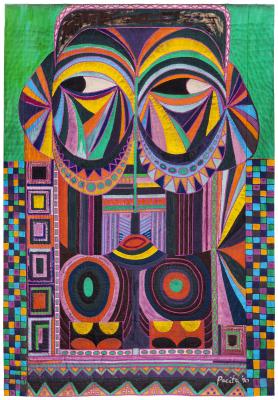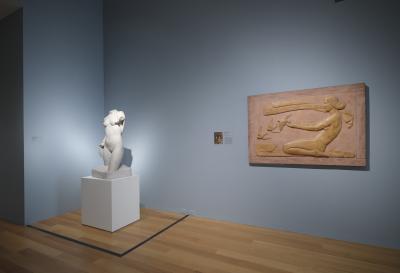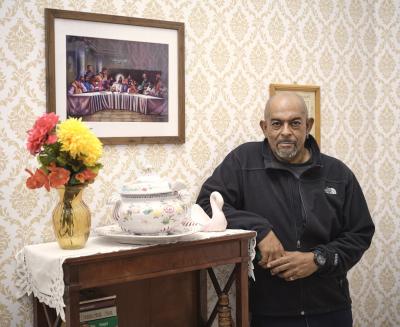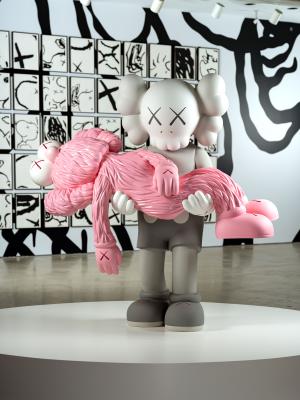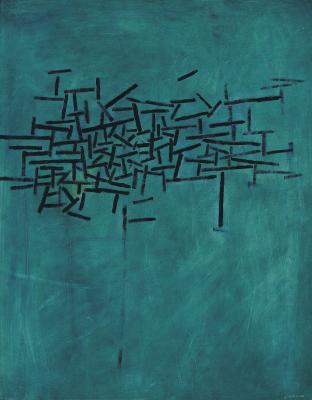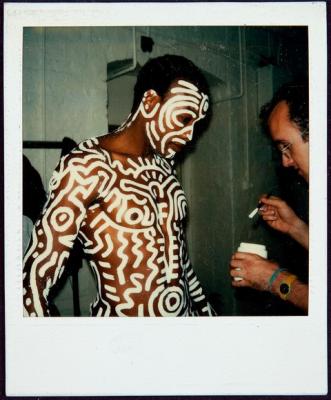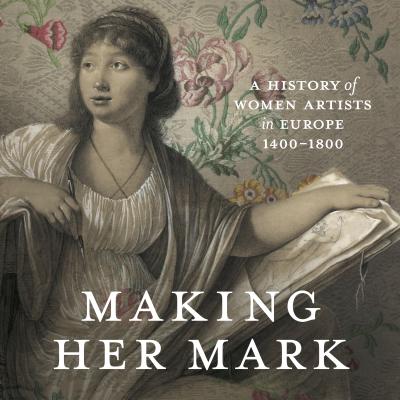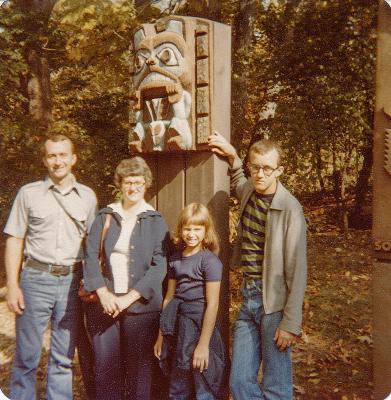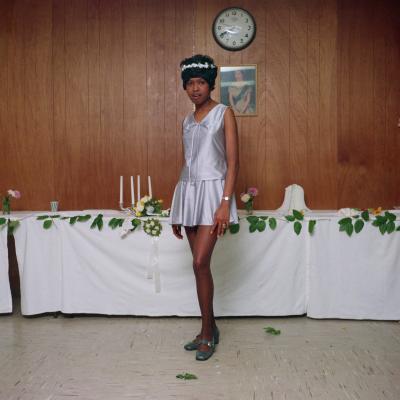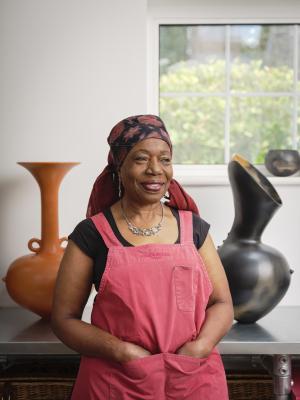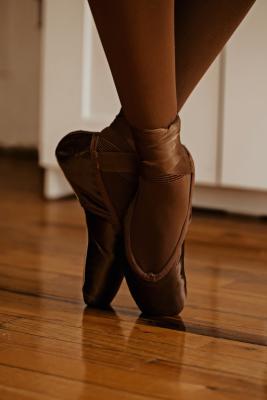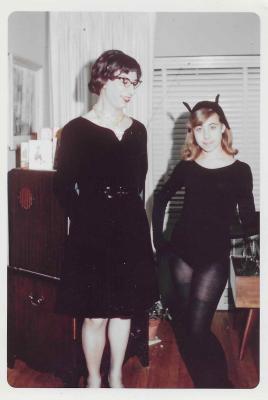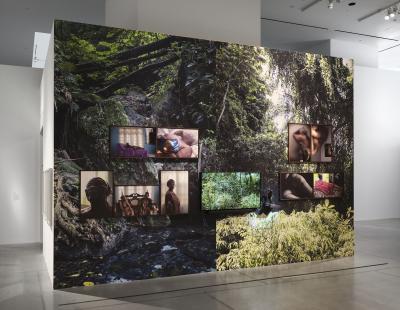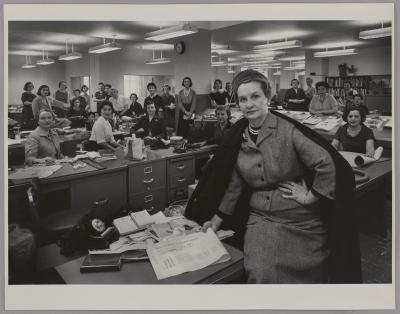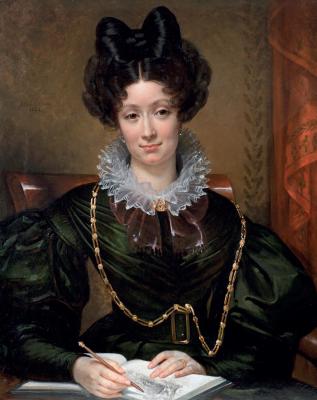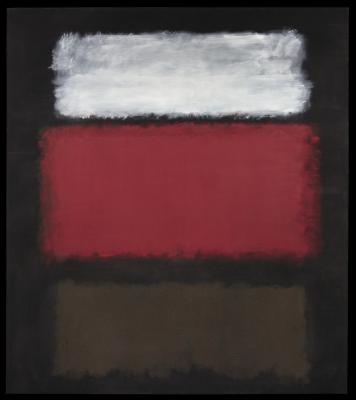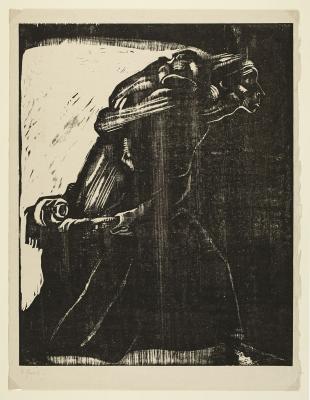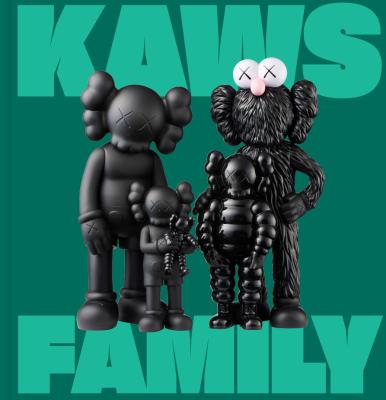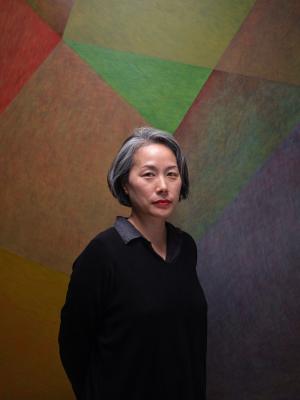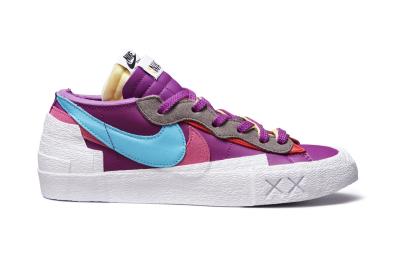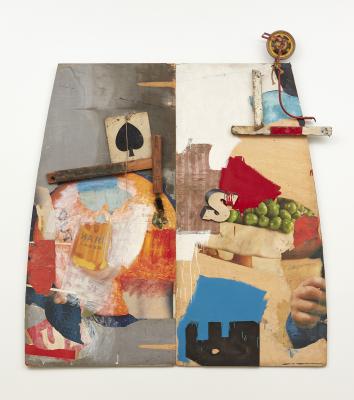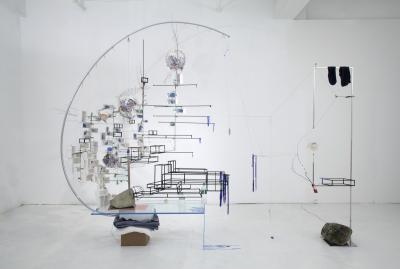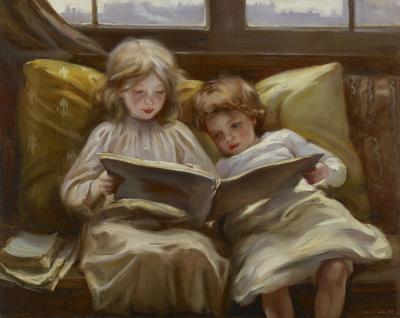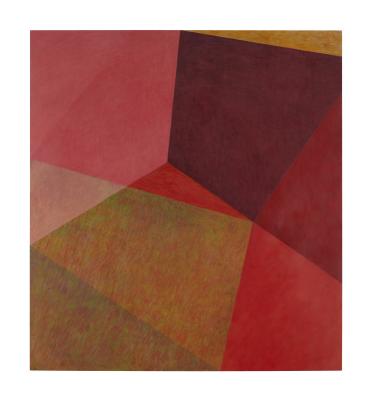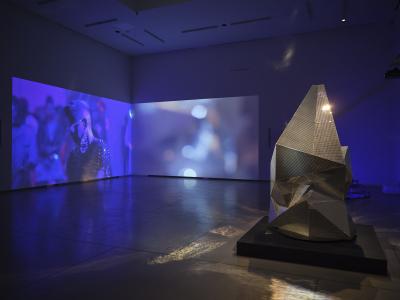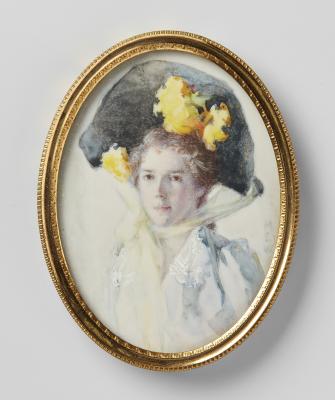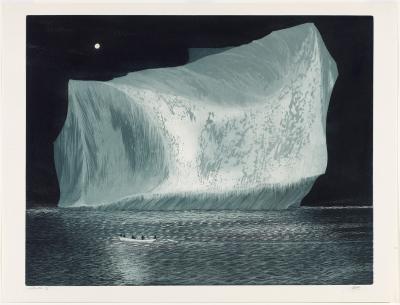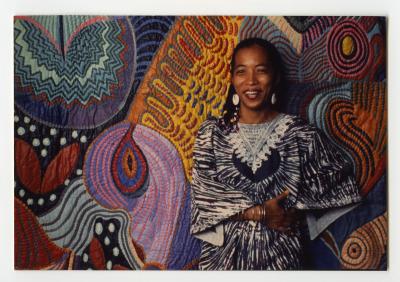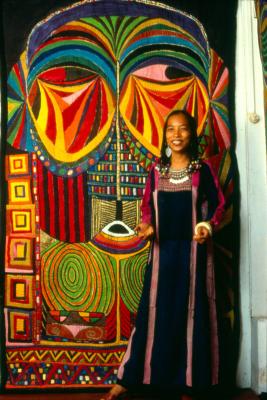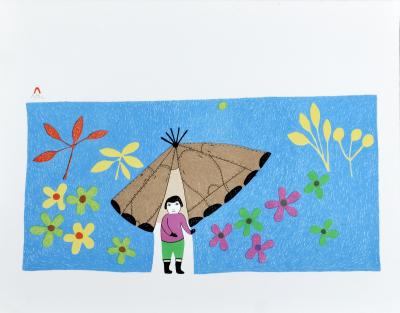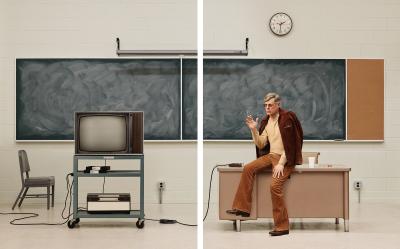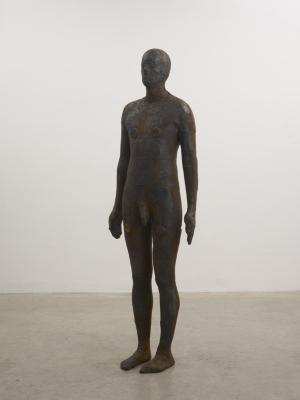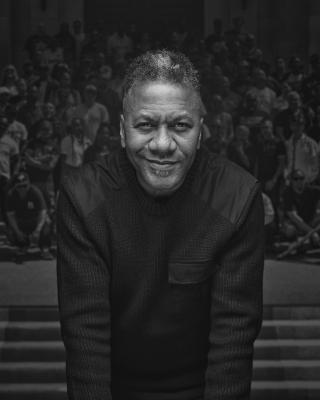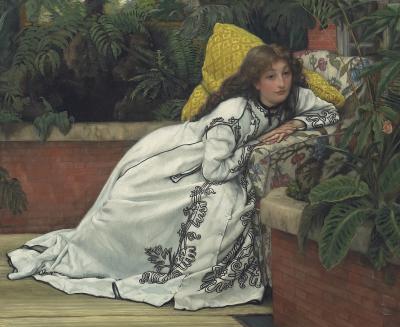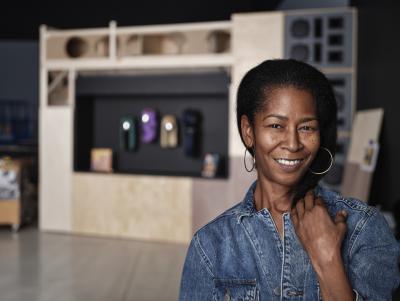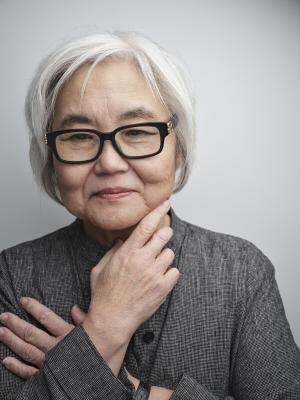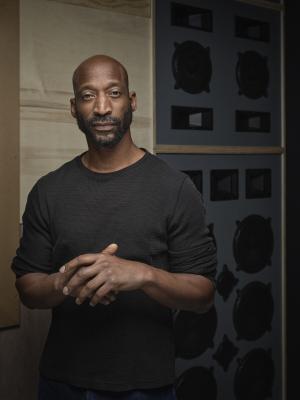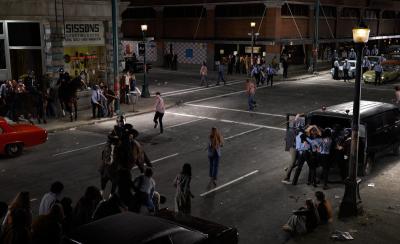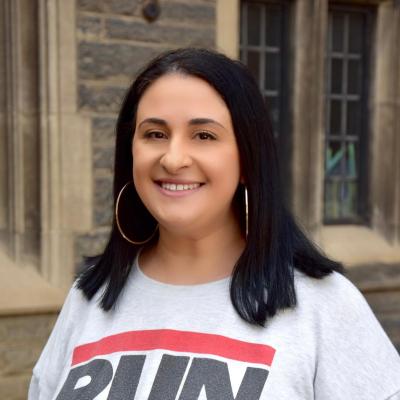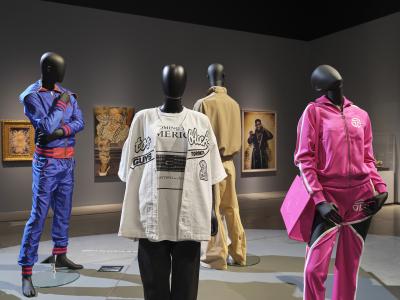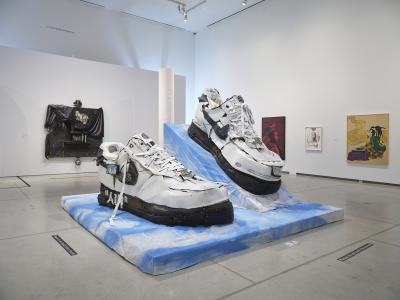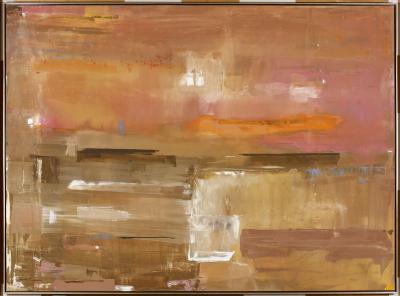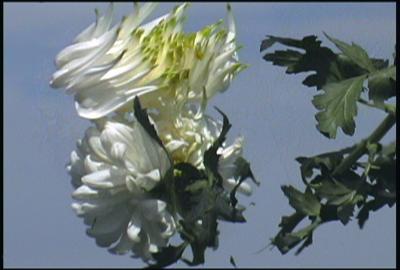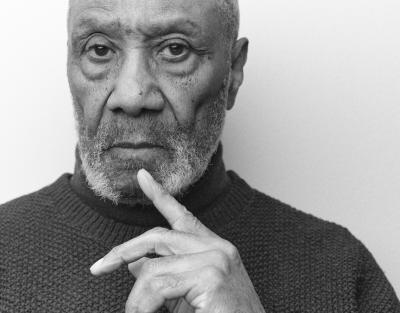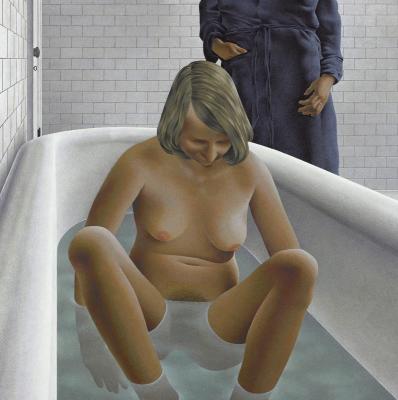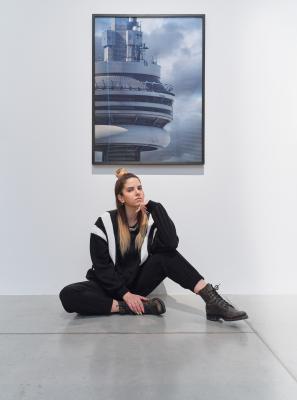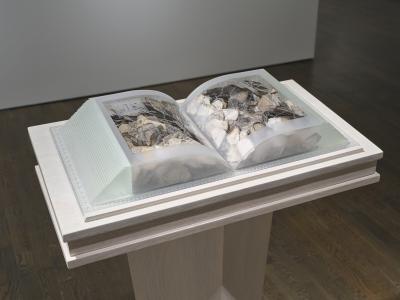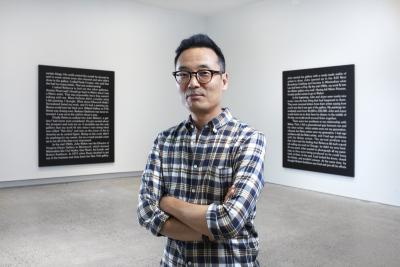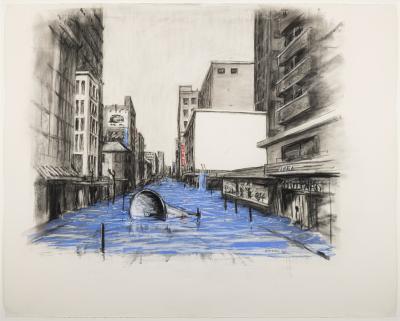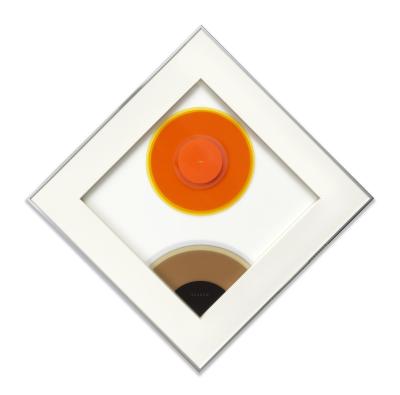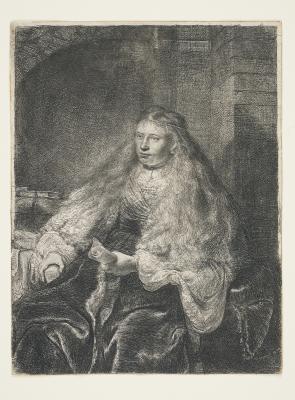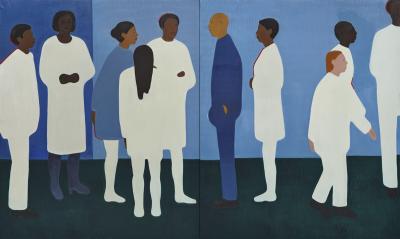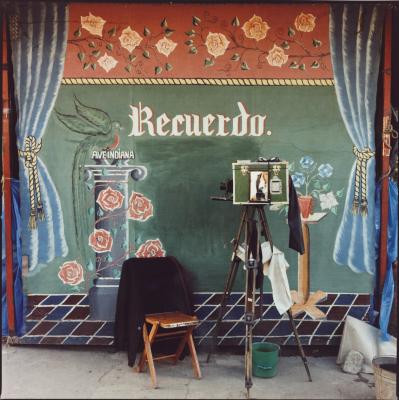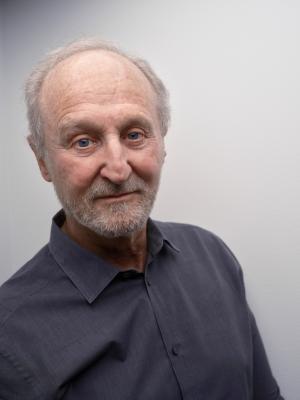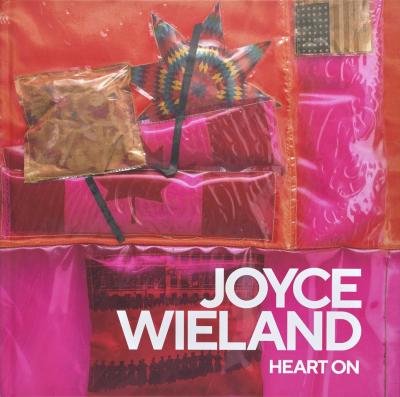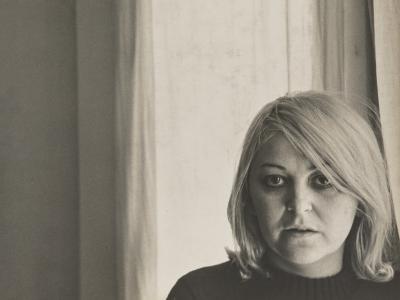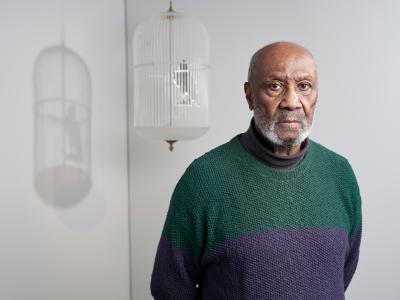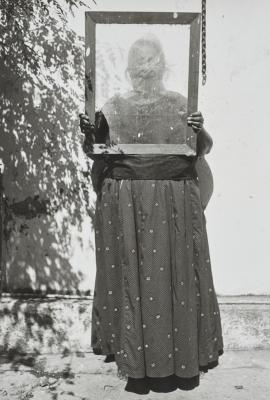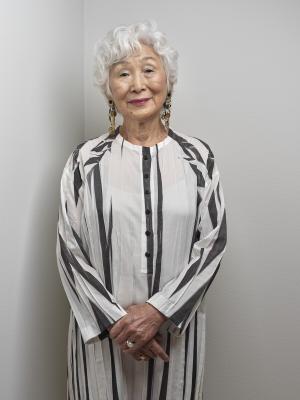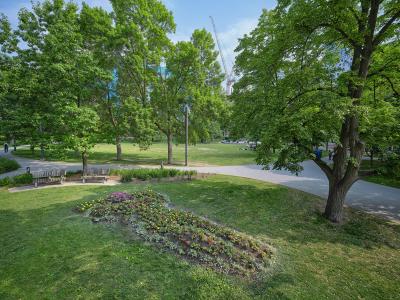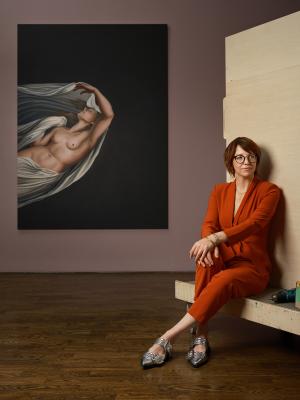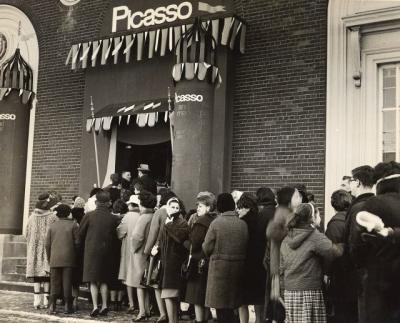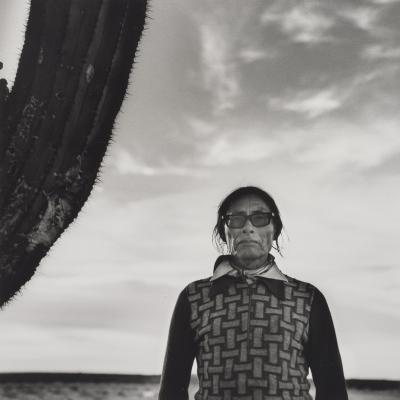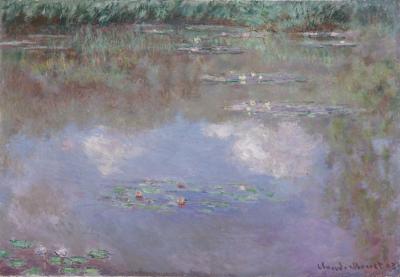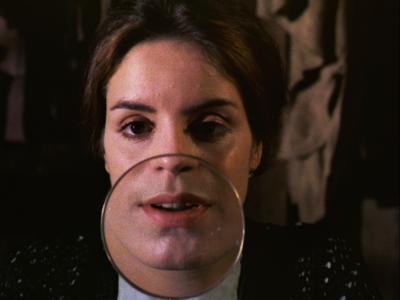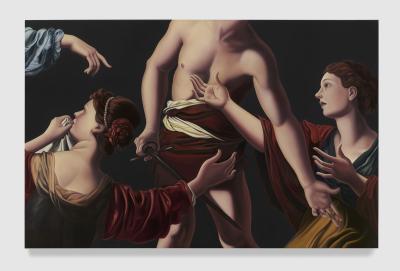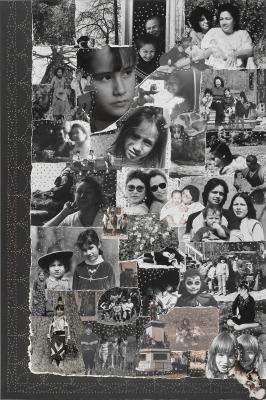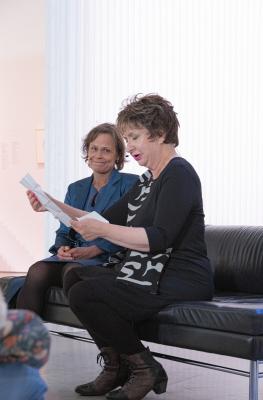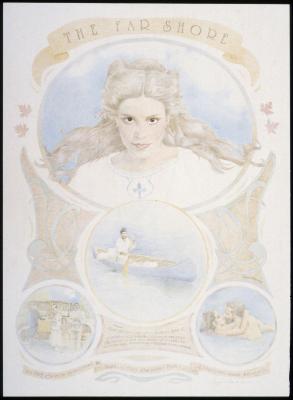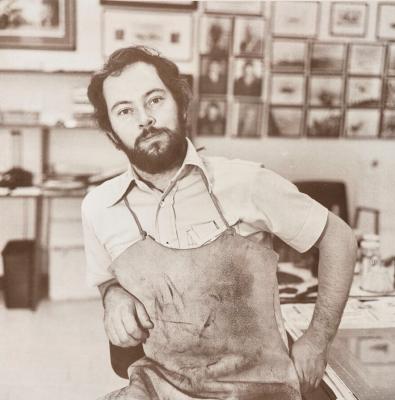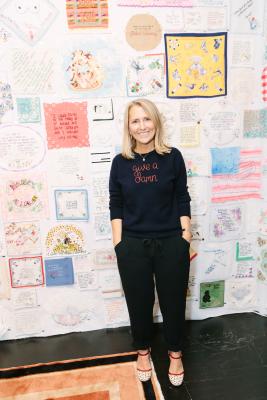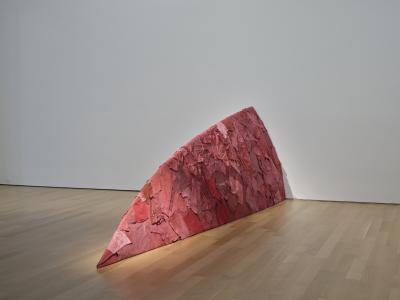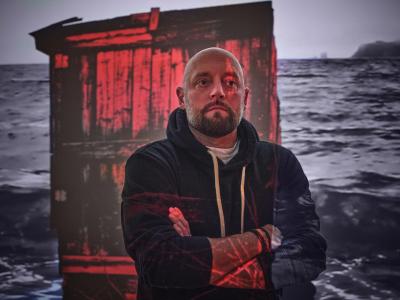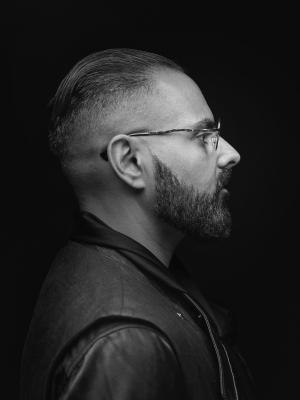Caitlin Cronenberg on Canonizing Views
The award-winning photographer shares the backstory about Drake’s cover art, on view now at the AGO
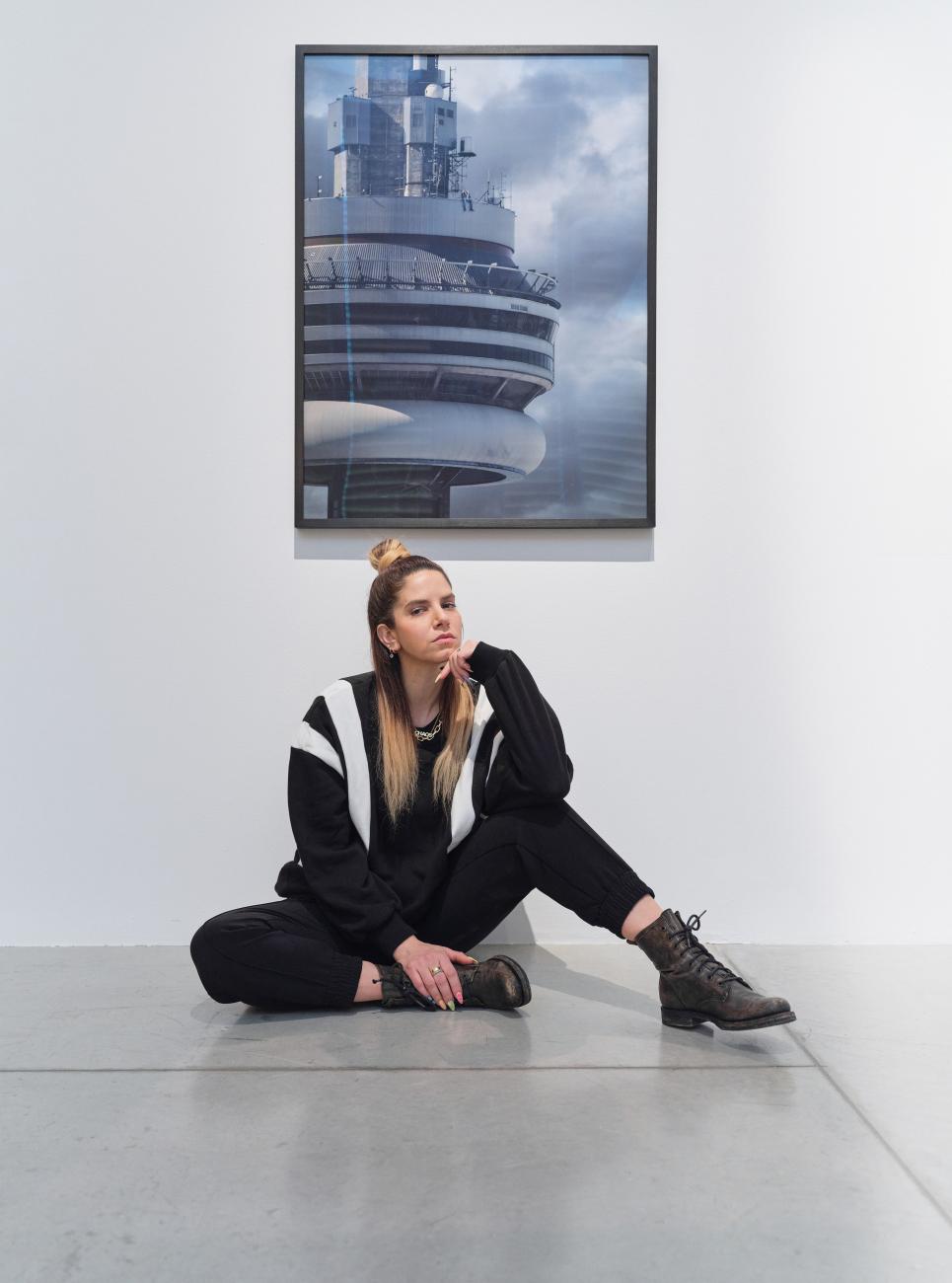
Caitlin Cronenberg with her work, Views, 2016. Photo: Craig Boyko © AGO
In 2015, Drake was conceptualizing artwork for the release of his fourth studio album, Views. To get the ball rolling, his team reached out to a beloved Toronto-based photographer with a series of ideas, one of which was to depict the rap star atop a national landmark. That photographer was Caitlin Cronenberg, and the landmark was the CN Tower.
After shooting what would later become a 12-image photo book released with the album, Cronenberg was surprised and delighted to learn that Drake and his team had selected the CN Tower photograph as the official cover art for Views. The album topped the charts with hits like One Dance and Hotline Bling, and Cronenberg’s photograph became globally recognized. Fast forward almost ten years and the portrait is on view at the AGO as part of the exhibition The Culture: Hip Hop and Contemporary Art in the 21st Century, symbolizing its broad impact on hip hop and visual culture at large.
Cronenberg is an award-winning photographer and filmmaker. Her signature style of celebrity portraiture has been featured in the pages of Vogue, Vanity Fair, Harper’s Bazaar and The New York Times. In 2024, she made her feature film directorial debut with the dystopian thriller, Humane, starring Jay Baruchel.
Cronenberg recently visited the AGO to see The Culture and get a closer look at her portrait of Drake installed in the exhibition. She spoke to Foyer about the portrait’s backstory, her practice at large, and the pride she feels as a Toronto native seeing her work hanging at the AGO.
Foyer: Your Views photograph has become globally ubiquitous. Where did the idea initially come from? How was it technically achieved? What was your creative approach to the rest of the photo series?
Cronenberg: The creative direction came from Drake's team. They sent me a PDF of different ideas and inspirations. Judging by his previous album art, I thought they might want to execute one of these ideas, but they actually wanted to do them all, including the CN Tower concept. At the time, I had a four-month-old but I was ready to go and really wanted to make sure that we did the job and did it right. When it came time to execute the CN Tower idea, we went through all the right channels. We asked the CN tower if there was any way he could actually shoot on the structure. They said absolutely not, and that it was much too dangerous. We then brainstormed about how to get a clear shot of the structure. We considered a helicopter and a drone. It was really important to me that I actually take a shot of the tower. We unfortunately had to decide to shoot Drake in-studio, and add him to the image in post, but I wanted to make sure it wasn't a stock photo of the CN Tower. I shot it from a client center in my husband's law firm in First Canadian Place on the 63rd floor. I shot it with a 700-millimeter lens – the biggest lens I've ever used – which is so heavy it needs its own tripod.
We went back to the studio and – attempting to match angles – shot Drake on a table in front of a blank wall, then we put it together in post. Of all the photos that we shot – each one being a kind-of love letter to the city and surrounding area – I didn't expect this one to be so popular. It just didn't occur to me that this photo could become what it did. Nothing I had shot had ever gone viral before and I had no idea how that happened. I was also probably underestimating how far his reach was at the time. I was just there to shoot, execute, and try to do the best job I could for the client. I wasn’t thinking about all the different late-night shows that were going to show parodies of little Drake sitting on different things, and how viral that went at the time – it was totally mind blowing. I'm glad that his team came prepared with all of those great ideas because, he's an artist, he has a point of view, and they knew what they were trying to achieve. I'm always up for pitching my own ideas, but when a client comes to me and they know what they want, I'm just happy to execute – especially when they're an artist themselves.
It’s totally surreal to see the photograph hanging here at the AGO. I came here as a kid, and now my art is hanging here.
You’ve shot portraits of a range of characters and personalities. When faced with a new subject to photograph, what are the steps you take to assure you capture them in an authentic way that honors the person they are as well as your artistic vision?
I try very hard to capture an authentic portrait of that person in that moment – even if I have six minutes with someone during a film festival and I have to get to know them quickly. I aim to capture an authentic portrait of that person. It doesn't necessarily have to encapsulate their entire personality, but I do want to give them something that when they look at it, they say, “Oh, that looks like me”. It's funny, because I was very shy kid – I couldn't talk to people; I could never do something like this interview; I could never get up on a stage; I couldn't talk publicly; I didn't talk to strangers. But, through working on big sets and having to just figure it out, I’ve learned to disarm someone with a joke or just by being very friendly.
I don't know if that's the Canadian in me, but I don't want someone to walk onto my set and feel uncomfortable – I want them to immediately feel at ease. I always try to have good music playing. I try to have a playlist that has something for everybody, so people will always hear something that will put them at ease. I always have a smile on my face and welcome them in, so that even in a split second, they think, “I'm okay, this is gonna be fine.” A lot of my subjects are actors, and don't love having their picture taken. They like acting and embodying a character, and it's harder for them to be themselves. Many people have told me that. I really want to tell a story with every shot I take, even if it's a casual portrait.
I like to try and connect with my subjects. Look them in the eye, shake their hand, be a human – the classic stuff. Not everybody is as open to it. Some are very guarded, especially if they're doing a TIFF press circuit or going from photo studio to photo studio. That’s why I try and bring something special into the environment, at least a bit of music or a fun vibe on set. Sometimes my kid is even playing cars on the floor because he was sick and had to come to work with me. I think one of the keys to shooting artists is just remembering that every artist is a person, and we’re just two people trying to capture something fantastic.
In 2024, you directed your first feature film, Humane. Can you share some reflections about what it felt like directing a feature compared to your other work, and if you plan to do it again? If so, are you working on anything that you could share with us?
Directing felt like a natural extension of photography in many ways. I often have to direct on a still photoshoot. The difference is actors talking, having dialog to record, and dealing with so many people and so many personalities. That was the part of the challenge that I was the most excited about. Humane is a very wordy script. There are always multiple characters saying multiple things. It felt like I jumped into the fire headfirst. I was so fortunate to have such talented actors who are such pros that if there was a moment where I was unsure, they were sure, and they would reassure me that it was okay.
I waited until I had been doing photography for 20 years before I sidestepped into the directing lane, and it felt very natural. I had such a positive experience. I loved my crew, my cast, and I love the final result. I was very proud of it. I love shooting photography – it will always be my first love – but I am trying to continue directing as well because it does feel natural for me. It feels like an extended way to tell stories, and I've got a lot of stories to tell. It's miraculous in this business to ever get anything made. The industry is tough. It's a recession, it's hard to find money, it's hard to find time, it's hard to have a unique voice. If I'm lucky enough to direct again, I will feel even more fortunate than I feel now. I am definitely working on something. It's too soon to say what it is. I didn't write it. It's a horror movie and I'm very excited about it.
The Culture: Hip Hop and Contemporary Art in the 21st Century is on Level 5 of the AGO. The exhibition is co-curated by Asma Naeem, the Baltimore Museum of Art (BMA)’s Dorothy Wagner Wallis Director; Gamynne Guillotte, the BMA’s Chief Education Officer; Hannah Klemm, Saint Louis Art Museum (SLAM)’s Associate Curator of Modern and Contemporary Art; and Andréa Purnell, SLAM’s Audience Development Manager. The AGO presentation is organized by Julie Crooks, Curator, Arts of Global Africa and the Diaspora, AGO.
